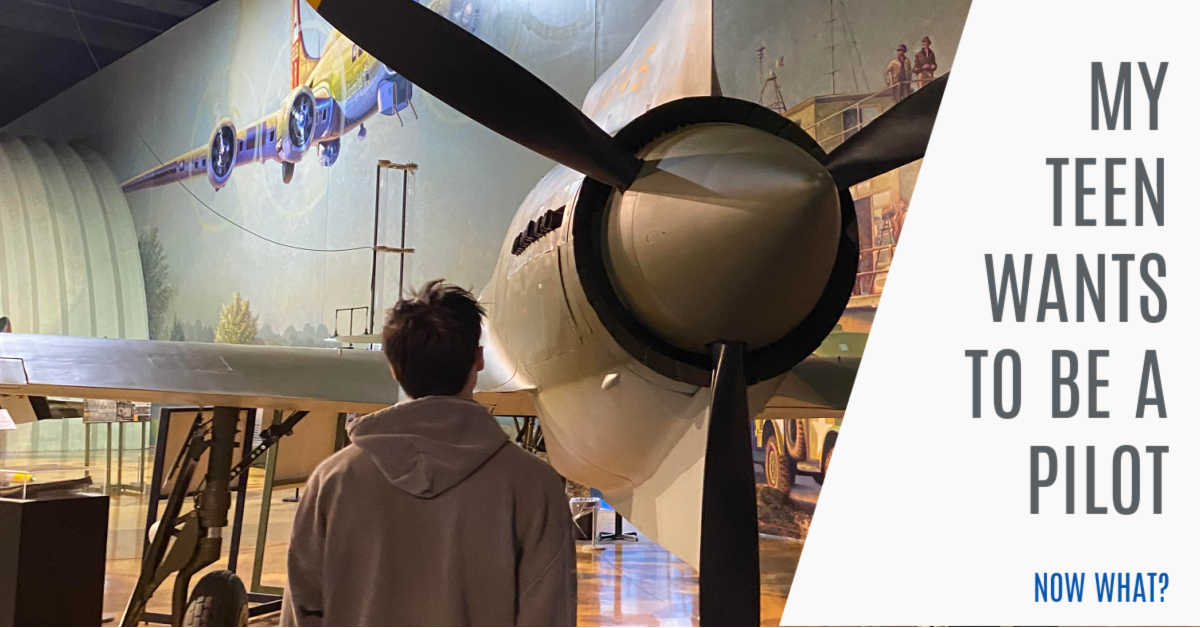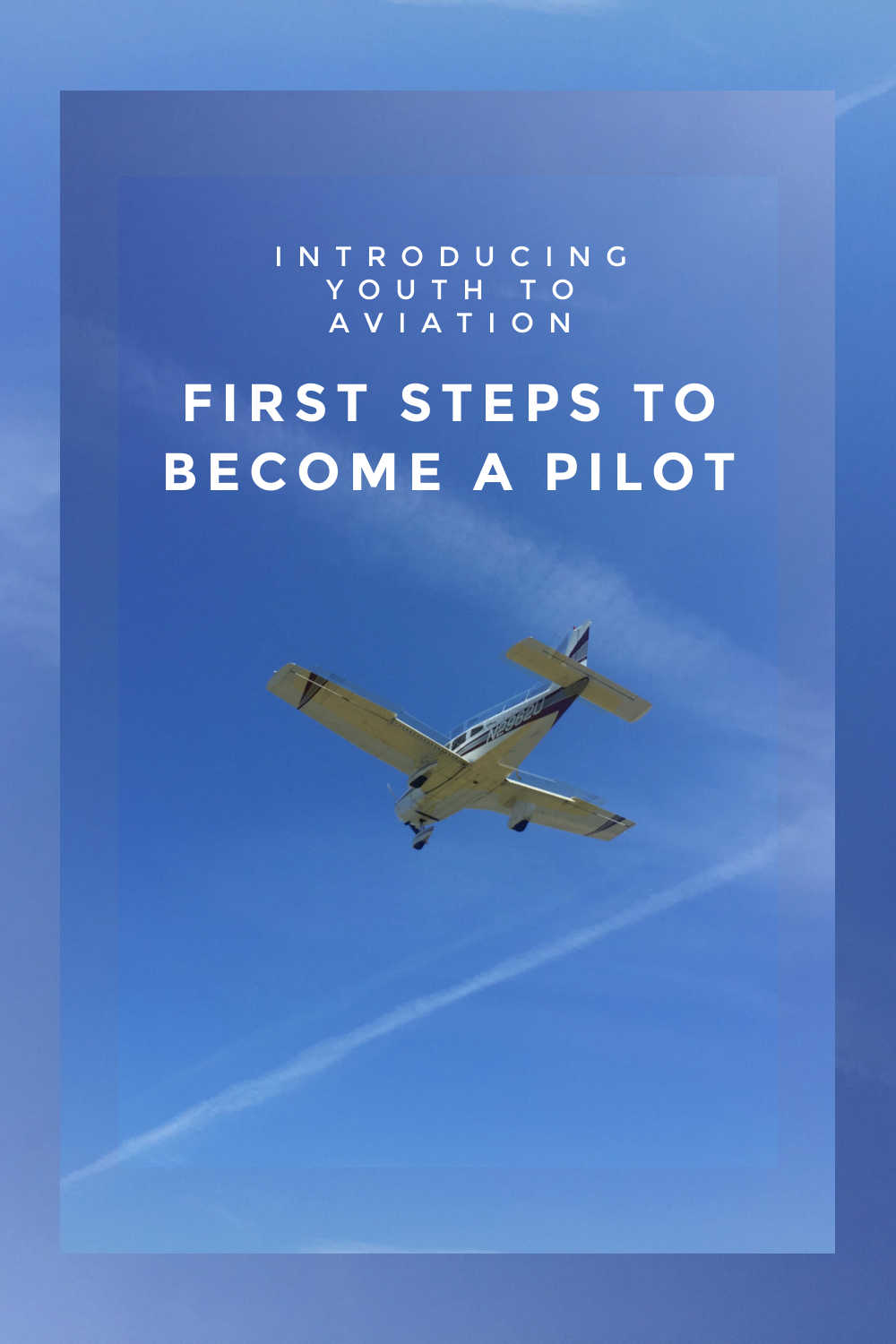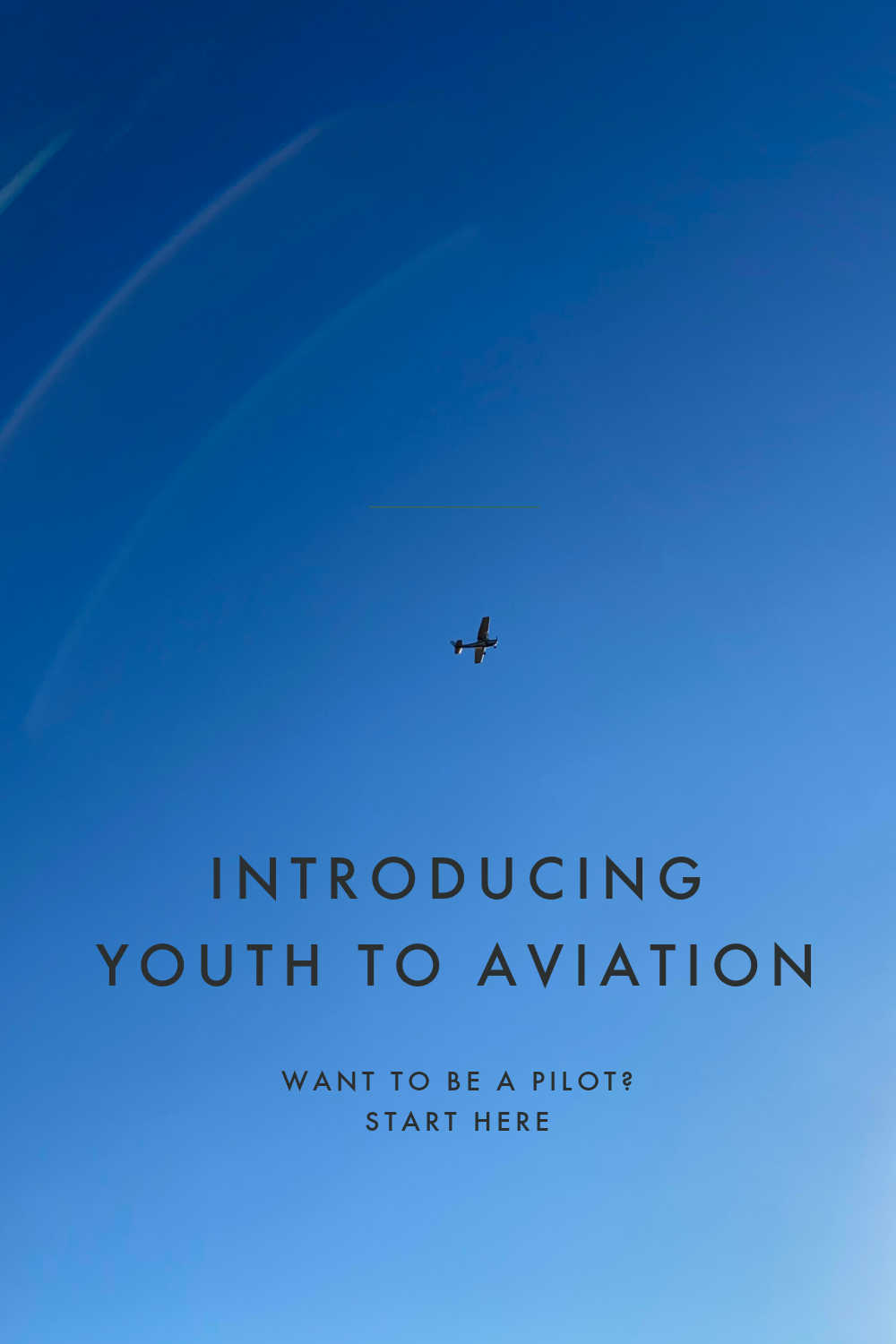rachelteodoro
My Teenager Wants to Be a Pilot: Now What?
My youngest son Owen has always been into airplanes. He started drawing and designing them in his school journal when he was in elementary school. While my oldest son was looking at fast cars on the highway, Owen was looking up in the sky identifying aircraft. As parents, we look for ways to support our kids in their passions, and Owen's passion for airplanes just kept growing. He really pushed us to let him apply to an aviation high school out of district and then continued to explore extra curricular programs that would allow him to start flight training about the same time he was learning to drive a car. He narrowed his focus, and he's pursuing a career in commercial aviation. After the pandemic, the flight industry had a little shake up, and we've all heard about the pilot shortages. It's a great time to head into the industry, but where do you even start? Here is what we've learned as parents so far.
Supporting Your Child on the Path to Becoming a Pilot
Where to Start in Aviation
If you are just starting to look at ways to encourage a young students passion, these are great ways to get more information and get involved.
Young Eagles
Owen will tell you that his passion started when he took a Young Eagles flight as part of their Boy Scout activities when he was nine. The Young Eagles program exists to introduce and inspire kids in the world of aviation. Volunteer pilots are dedicated to giving 8-17 year olds their first flight. You can find more information here.
The pilot that took Owen up, had a kit plane he had built. In the air Owen recognized some landmarks, and they ended up flying over our house. The pilot let Owen take the controls and from that point on, he was sold! The flight lasted less than an hour, but changed his life!
Civil Air Patrol
The Civil Air Patrol is another way for young interested students to get involved in aviation. Civil Air Patrol is an auxiliary of the Air Force, and offers more military style involvement. There are boot camps, practice drills and is more of a commitment for students, but can be really beneficial to their future training, especially if they are interested in ROTC, the Air Force or the Academy. I have heard of a lot of great scholarship opportunities through CAP, and while we don't have any personal experience with our local chapter, I have heard from other parents that it's a great way for their students to get involved.
Women in Aviation
Aviation is still a very male dominated field. Women account for only about 8% of airline pilots. Encouraging women and girls in aviation and aerospace is important and there are organizations like WIA who do just that. As a mom of a son, equality is very important trait to encourage. Thankfully, his aviation high school has a WIA chapter that he's involved in and local chapters work to encourage and mentor women and girls who are interested in aviation. It's not just for girls! Dive Into Aviation
We are fortunate that we live in the greater Seattle area, where the aerospace industry is strong. Not everyone has Boeing in their backyard! Use resources like Young Eagles and CAP to help you discover more options in your area.
For us, that meant exploring the free programs that the Museum of Flight in Seattle had. We learned about an aviation high school and he entered the lottery {and won} and learning from others who have also started exploring options in the aerospace industry, has helped us in the process.
This might mean, you start looking up flight schools in your area and getting tours there. Or looking into college aviation programs that are nearby and learning more. This could also mean stopping the pilots you see in the airport and asking them what their career path has looked like. We've done that a lot of times and never gotten the same answer twice!
Before You Get Your Pilot's License
Here's what I advise parents who reach out to me about flight training.
Flight training is expensive and it's involved. It's a lot more than just getting up in an airplane and flying around. Even if your kid is really good at the flight simulator video games, they may not be cut out to be in the cockpit.
There are a few different routes into a career in commercial aviation, but before the time and money is invested, these are the first steps I'd recommend to make sure that this is something your child wants to pursue.
First thing I recommend is to have your kids take a discovery flight. Every flight school offers these. They will cost you a few hundred dollars, but will give you an idea of what it's like to be in a cockpit of a little plane. Pilots don't just start out in 747's! They generally start out in little two or four seaters! If you've ever taken a flight in a little plane, you know this is a different experience. Students often throw up, feel sick or realize they like being in the back of the plane, not in the front!
Your few hundred dollars just saved you hundreds of thousands of dollars and many many years of training if that's the case!
Second, if they loved the discovery flight and for sure want to start taking flight lessons, get a first class medical exam. In order to get your PPL, you only need a third class medical. However, if your student wants to fly professionally, they will need a first class medical certificate. A first class medical steps down over time to a third class medical, but will remain current and allow them to continue to proceed in their flight training.
There are a lot of issues that come up with the medical certificate. Medications your child has been on {some ADD and acne medications can prevent approval-not having perfect vision isn't!}, and this can sometimes be a long drawn out process for young pilots. Again, if your student doesn't qualify for a first class medical, they can still fly, but need to start looking into different career options outside of commercial aviation. Getting the first class medical early will help them switch gears and explore other options if needed.
How Old Do You Have to Be to Get a Pilot's License?
This answer is complicated. First off, there is no age limit or requirement to take flying lessons. You simply just need a qualified pilot in the aircraft. If you want to fly balloons or gliders, you have to be at least 14. In order to fly solo in an airplane, you have to be 16. You can't get your Private Pilot's Certificate until you are 17.
What is a Private Pilot's License?
There are lots of fun benefits to having your PPL. This license is very common for hobby flying! You can take friends and family members {but can't charge them for flights} up in an airplane and enjoy flying around. You can even fly internationally, but you can't fly through clouds {you'll need an instrument rating for that}, which is why you'll often hear of flights getting cancelled quite often due to weather. You need a third class medical to obtain your PPL and while there is no set amount of hours you need to fly to receive your PPL, you will need to pass an FAA checkride before you receive your license. You'll also need to complete private pilot ground school.
If your child wants to continue on to pursue a commercial pilot license, there are a few ways to do that. Getting hired on at the airlines doesn't have a degree requirement. It does have a flight hour and certificate requirement. Depending on the program a student is enrolled in, the hours required vary. If a student has a military background, the minimum flight hours to be hired is 750. If they have an R-ATP background {through a 4 year university program}, the minimum flight hours is 1000. The minimum age for the R-ATP is 21. If they are going for an ATP {non college standard program}, the minimum age is 23 with 1500 flight hours. I could write a whole post on the differences of the programs and requirements, but since this is a basic overview of how to get started, I'll save that for another day.
Don't train beyond a PPL if your student is considering going to an R-ATP school. R-ATP schools {like UND, Purdue, Embry Riddle} will not allow any certifications or licenses beyond a PPL to transfer and will have to be redone in order to receive the R-ATP from their school. This is an FAA rule, not a college policy.
Looking for Flight Lessons
So you are forging ahead and looking into flight lessons. Thankfully, we had a few different options to choose from. You may not be so lucky depending on where you live. For us, we went into the flight school, got a tour, and asked questions. They will likely have a packet of information for you with their syllabus, as well as a rental agreement and cost breakdown.
Questions to Ask at a Flight School
1. Is your airport tower-controlled?
This is not make or break, but I think there is a HUGE advantage for students learning to fly at a tower-controlled airport. Learning how to talk to the tower is a skill that needs to be learned and will be part of their flight training. Many smaller airports are not tower controlled. This may not be an option depending on your nearest flight school. But if you have two to choose from, and one is tower controlled and the other is not, I'd vote for the towered airport.
2. Ask about the fleet of aircraft
It's important to know the type and age of the aircraft. There are FAA required maintenance schedules, so all aircraft will be maintained regularly. We had the option for our son to train on a Cessna 152 or a 172. The rental fee for the 172 was higher by about 30%. The fleet was larger though. There were often times when the 152's would all be down for maintenance or they'd be rented out well in advance, so it made getting flight time sometimes difficult. Comfort in the aircraft is another factor. Some students aren't comfortable in the mini cockpits of smaller aircraft.
3. Ask about any start up costs
You'll run into fees outside of flight training. There are books, maps, apps, headsets and more that are required for aviation. Some flight schools build in insurance into their fees, others require you to purchase insurance separately.
4. Safety Protocols
The FAA has set safety protocols for aviation, however, flight schools can set their own for students as well. This can be anything from required runway length to how many days are required to remain current.
5. Inquire about the Flight Instructors
Many Certified Flight Instructors {CFI's}, work at flight schools to build hours before they can get hired on at the airlines. There is turn over with CFI's because instructing isn't usually their end goal. Inquire about instructor turnover, how many students they have, and what their training requirements are.
How Often Should You Schedule Flight Lessons
You need to have a minimum of 40 hours required to get your PPL, and students work at their own pace generally. Less hours isn't an indicator of a better pilot, just one that had better weather! The more flying you do, the faster you can become proficient in the skills. Ask any student pilot and they will tell you, they notice their skills aren't as great if there are gaps in their training. That said, there are a lot of factors that come into play. Not only do you need to have the money {more on that} for frequent flight training, you need the time, the weather, the instructor and the aircraft. So many parts of the puzzle need to come together.
There have been more than a few times when Owen has had flights scheduled daily for a week and will have every single one of the flights canceled. Weather plays a big part in flight training as there are minimums required for student pilots. Flight schools {and the FAA} will also have requirements to remain current, so if the student hasn't flown in a certain amount of time, a refresher lesson with a CFI is required to check them off before they can continue in their training.
If your child starts flight training too soon, they could drag the process out. Remember {see above}, a teen can't solo until they are 16 and can't get their PPL until they turn 17.
There is no right or wrong answer, but flying less often will generally cost you more in the long run. Depending on the students end goal, you'll also need to continue to pay for aircraft rental and flight time so they can remain current until they seek out their next certification.

How Much Does it Cost to Learn to Fly?
The flight school will generally give you an average cost breakdown of what it will cost to obtain a PPL. Remember that this is average. Depending on how often your student flies, weather, schedule and proficiency will all hinder or speed up progress. Talking to LOTS of parents supporting their children getting their PPL and the cost is all over the board! Some students fly every single day in the summer and complete their PPL in 40 hours. Some students have a fuller schedule outside of flight training and take longer. Regionally, there are a lot of factors that go into the price too. It is definitely more expensive to learn to fly in a more urban area {ie Seattle}, than it is at a small regional airport in say small town Indiana.
Paying for Flight Training
Flight training is not cheap! Depending on where you live, the current average cost of obtaining a PPL is $12k. The average in our area at our flight school is quoted at $19k. I will tell you that we have paid more than that. Money often gets in the way of flight training.
If your teen is wanting to take flight lessons, you might wonder if you can use any of your saved up 529 funds. Generally, the answer is no. Most flight schools for flight training before college are not part of the lists of eligible educational institutions. You can use this link to search to see if yours is though. You might want your student to help contribute so that they have some skin in the game. There are scholarship opportunities available that are worth looking into as well. You can also discuss your payment options at the flight school you have selected.
Why Start Teens in Flight Training
You don't need flight training to start a career in aviation. As a mom, I think it's been a really beneficial way for us to support our son and make sure he was prepared to make the decision to pursue aviation as a career. There are a lot of different paths to aviation for kids who like airplanes, and not all of them involve flying. However, if your teen thinks they might want to fly, there's no downside {other than the expense!}, to them starting as teens.
If your teen wants to go the R-ATP route {getting flight training and a college degree}, having their PPL coming into college, does give them a leg up. At many schools {not all!} it allows them to start flight training right away. Flight programs at universities are competitive and spots are limited, and having their PPL does set a student apart in the application process.
We toured a lot of colleges. Time and time again, I heard from students in the program that they had switched their majors. I don't know how accurate this stat is, but I heard it from an aviation advisor. For students who have never been in the cockpit before, only 75% of those students will continue on to complete their flight training. Personally {I ask a lot of questions!}, after touring a lot of flight programs at universities and talking to a lot of parents, I'd say that rate is probably more at 50%. Flying isn't for everyone.
There is so much more involved in supporting your teen as they want to enter into a career in aviation. But this should act as a good start. I hope this was helpful to provide more information. Feel free to message me with any questions. I also have a highlight called student pilot on my Instagram account that will help answer some questions as well.
 disclaimer: this post may have affiliate links. By clicking on them and purchasing through them, I may receive a small commission. These small purchases help me to continue to keep writing content and creating at Rachel Teodoro. Thank you!
disclaimer: this post may have affiliate links. By clicking on them and purchasing through them, I may receive a small commission. These small purchases help me to continue to keep writing content and creating at Rachel Teodoro. Thank you!
loading..














No comments
Post a Comment